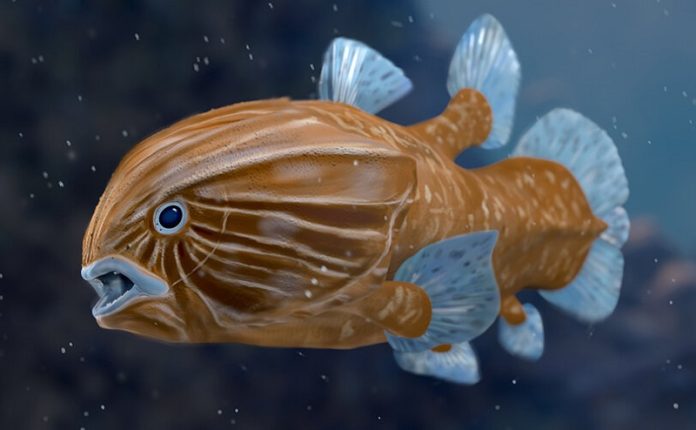
Scientists have found that coelacanths, a type of strange fish known as a “living fossil,” thrived in Switzerland following a mass extinction event about 252 million years ago.
The mass extinction event, known as the “Great Dying,” wiped out over 80% of marine species, but these unusual fish seemed to have taken advantage of the changing environment.
Coelacanths are cool because they are more closely related to humans and other land-dwelling animals than they are to most fish.
Their unusual fins and other features give us clues about what our fishy ancestors might have looked like.
Despite existing for over 420 million years, coelacanths have evolved relatively slowly, which is why they’re called “living fossils.”
Researchers from the Museum of Natural History of Geneva and the University of Geneva (UNIGE) studied coelacanth fossils discovered in eastern Switzerland and Ticino.
Among these fossils, they found a new species, Foreyia maxkuhni, which stood out due to its dome-shaped skull and short body.
While studying fossils from the Monte San Giorgio site in Ticino, which is recognized by UNESCO for its significance, researchers identified yet another new species of coelacanth.
This species, named Rieppelia heinzfurreri, was very similar to the one found in eastern Switzerland, but it had its own unique quirks, like large front fins and gigantic opercles (the bony coverings of a fish’s gills).
What’s particularly interesting about these discoveries is that they represent a small evolutionary burst in coelacanths. This means that several new species of coelacanths appeared in a short amount of time and in a small area.
This is the first time such a phenomenon has been seen in coelacanths.
These findings show that the strange Swiss coelacanths adapted and evolved into unique forms to take advantage of the post-extinction Earth environment.
Eventually, these unique niches were taken over by other groups of fish, including the major groups of bony ray-finned fishes we see today.
The team at the Natural History Museum in Geneva is continuing to study these fascinating coelacanths by comparing them with the genomes of modern-day vertebrates.
This will help them understand what genetic characteristics might have led to these fish’s bizarre forms. So, stay tuned for more updates on these funky fish from the past!
Their findings were published in the journal Scientific Reports.
Follow us on Twitter for more articles about this topic.



